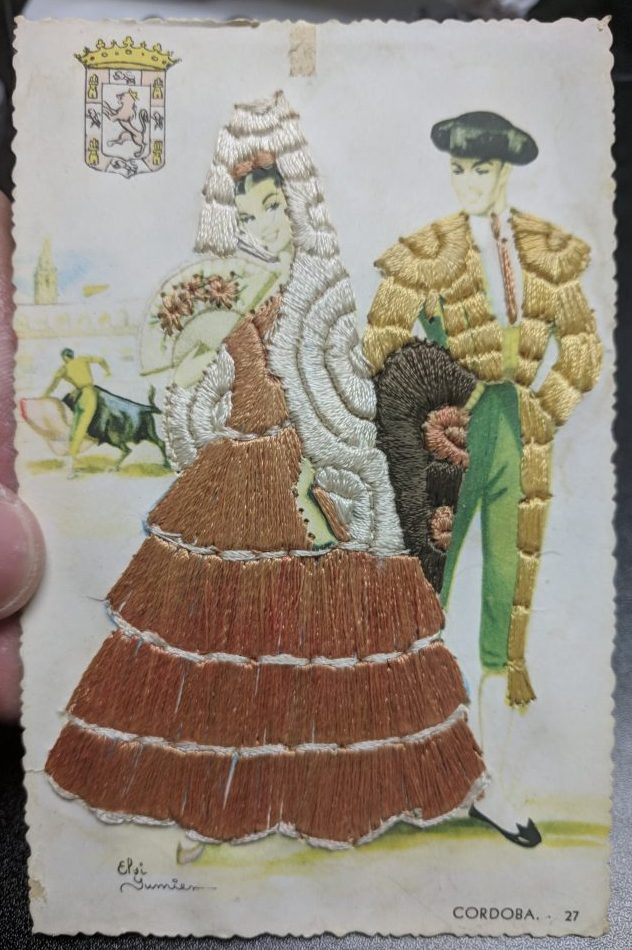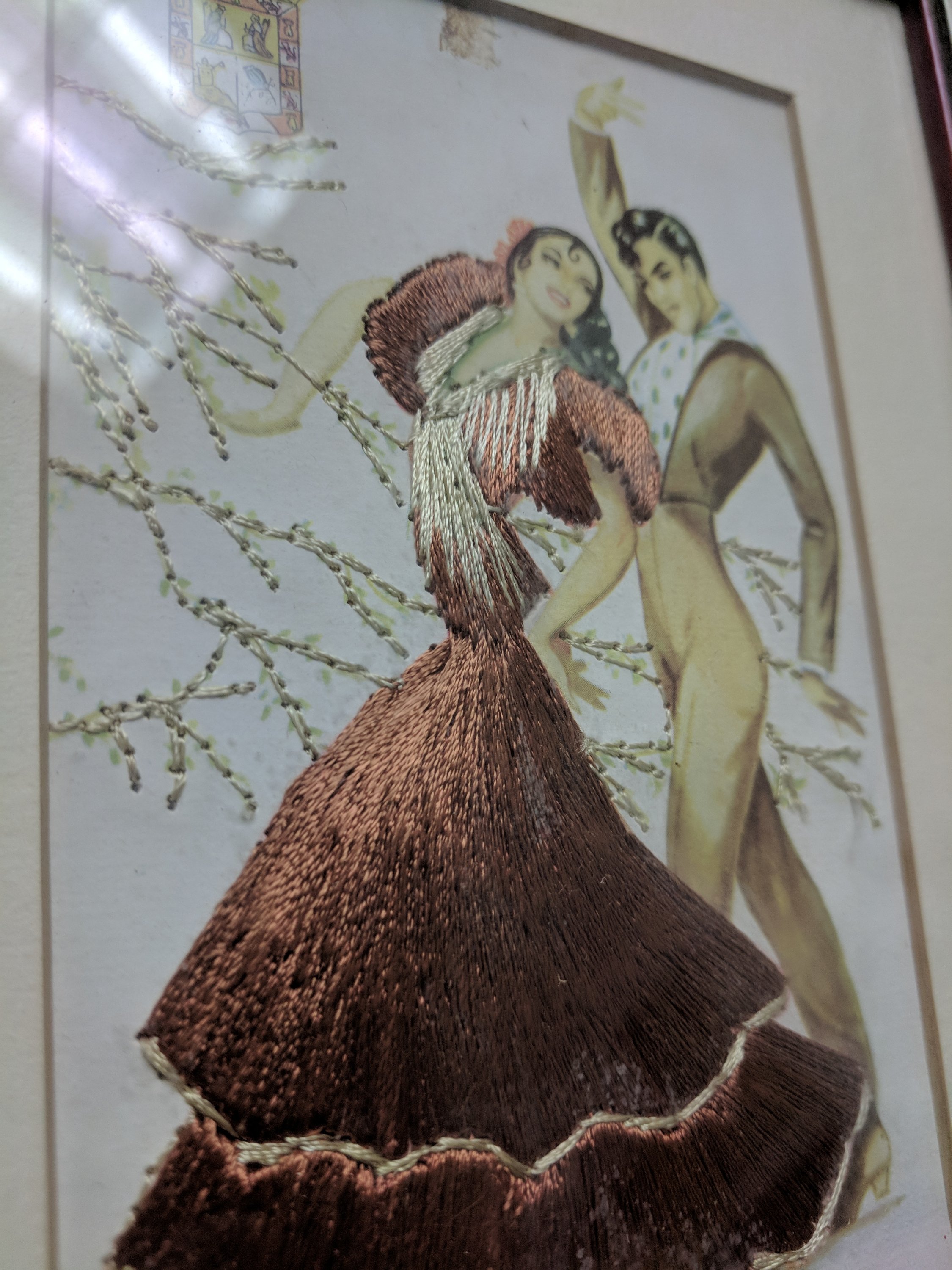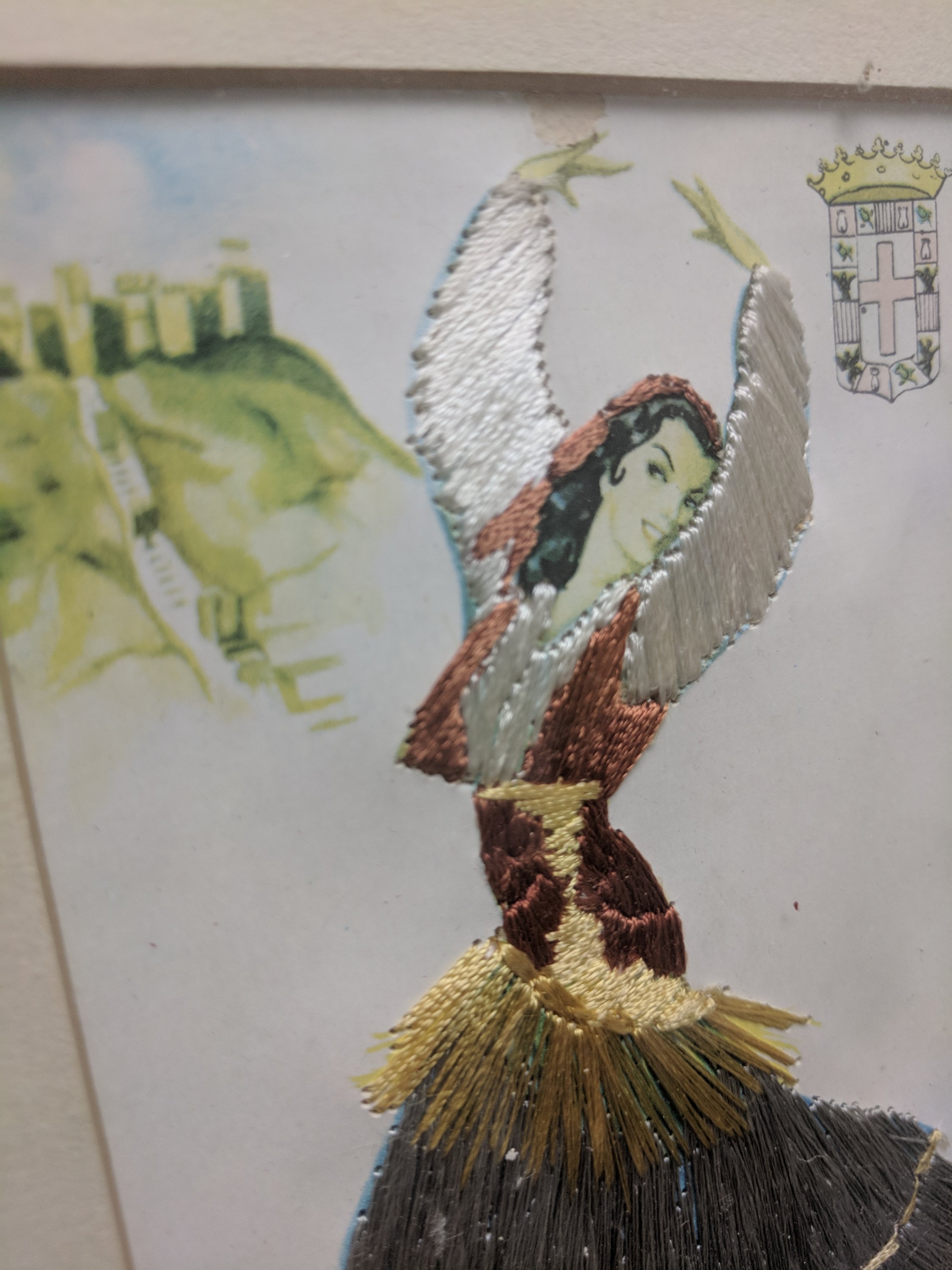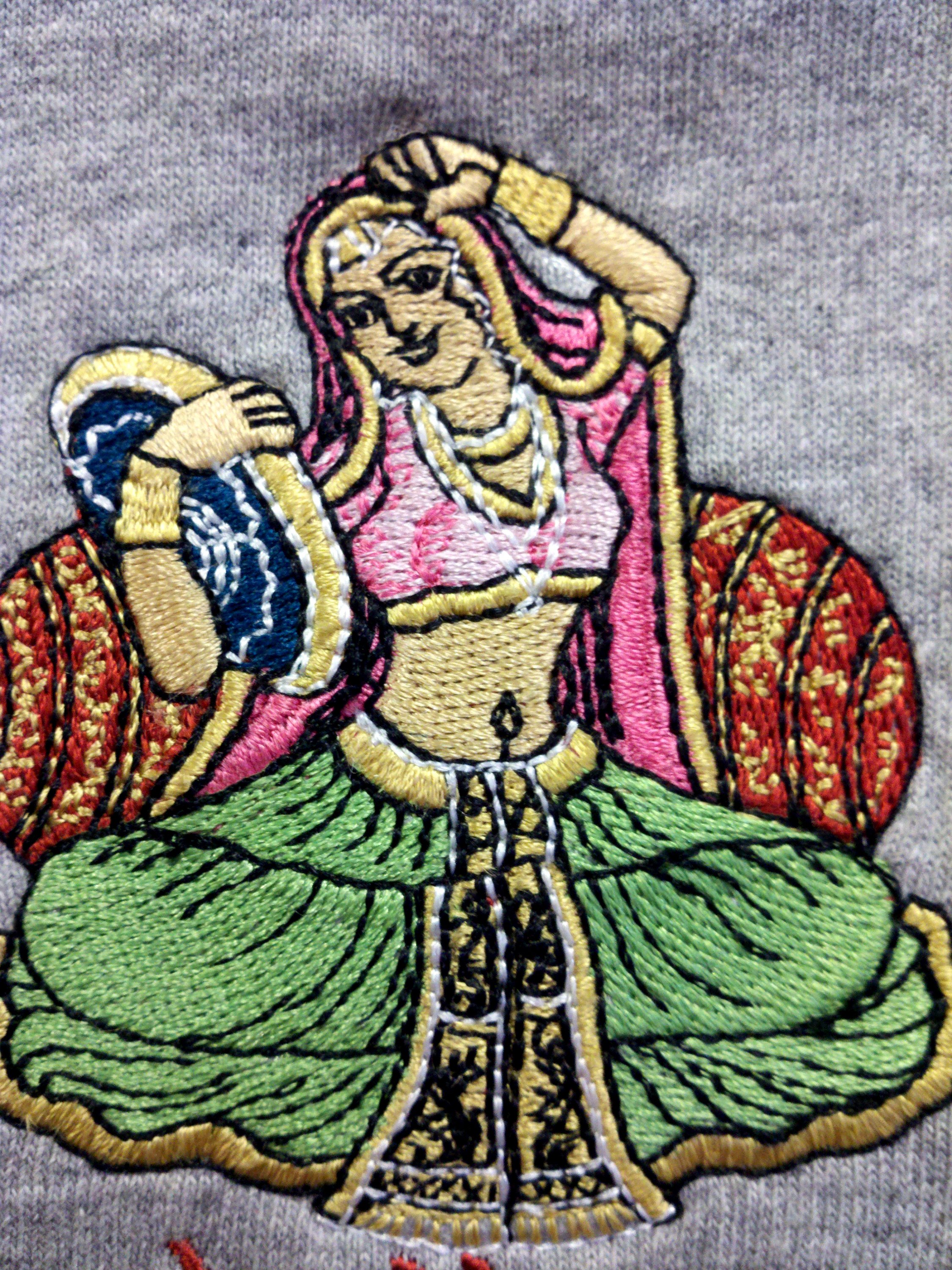
The sheen of the thread, glinting and glossy as the stitches radiate, a satin column turning, rippling, tracing curves across a surface. Swaths of shining embroidery, standing proud of a stained Spanish postcard, rendering the garb of these figures alive in the passing light. The thread lending weight to these tourist takeaways, these odd pieces of ephemera. The very cards you see pictured here are the first pieces of embroidery I encountered in my young life. Though they now reside in my office, these cards are relics of the first home to which my parents returned with the tiny person who would become the rather large digitizer behind this keyboard. As stated in a aged label on one of their battered frames, they came from our apartment in Echo Canyon, just east of Albuquerque, New Mexico.

You can achieve so much visual interest with overlapped satin stitches
I never imagined embroidery as a career or even as a primary mode of expression in my youth; even in all the years watching my mother work as a seamstress, I had not conceived of the life I would later lead. Still, I can’t help but think that these pieces influenced me. My love of simple motifs, of layered satin stitches, of texture and shine. How could they not have kindled my desire to make even the least detailed pieces dimensional; I believe that I must owe something to these cards. After all, you can see in them the hallmarks of what I now teach about dimensional, textural renderings in machine embroidery- following real-life structures in the item represented, layering stitches and using penetrations and shadows to create texture, building from the ‘ground’ up to create depth. These little hand-stitched cards exemplify why my reasons for that unending love of the satin stitch, and even show the randomness of natural surfaces and the power of stitch angles to create differences in color and to capture the play of light across their surfaces.

As the angles of the stitching follow the dress, they add dimension; that brown is stitched in a single color of thread.
While I may never know how much I owe my love of satin-carved stitching and texture to these cards, I do know that they can inspire embroiderers to examine the ways they create surface qualities with their stitching; changing the way they fill areas with thread. To that end, I implore you, before you decide to fill an area in your design with a single, flat-angled fill stitch, to think about what you might achieve with something a little different; rows of interlocked satins, reminiscent of the filled areas seen in vintage military patches.Imagine the subtle dimension of a curved fill, gently warped around a line that describes the volume of the item represented. Consider what life with which your next rendering would be imbued with just a bit of randomness imposed on the stitch length, so that even a standard fill can give a sense organic texture. All these ways of covering the ground are accessible and easy to do in digitizing software, there’s no reason to lock ourselves down to the default settings, to flat fills, or to the simplest automation. We can build our own textures.

Subtle variations in density and angle add so much depth and motion to this dress.
You can go beyond simply changing the surface texture of areas already defined in our art; imagine how much more natural the billows of a scarf or dress might look if the drapery were carved of shining satin stitches, with what was one element split into many with varying angles, giving the illusion of depth with their highlighted crowns and shadowed edges. How much more interesting is the single-color silhouette of a person if rather than a unidirectional fill, the legs, arms and head were carved of separate satin-stitched elements, while the clothing was formed of contrasting textured fills set at angles to create contrast with the satin limbs. Think how much more realistic a vehicle or building might look if walls or panels were rendered with differing stitch angles following the surfaces, so that each stitched panel captured and changed the light as it passed across, imitating the play of light over the real structure. Take this approach and you will understand why I have always considered embroidery to be less a ‘print in thread’ as a shallow relief sculpture rendered in stitches.

My first award winning piece could reasonably be seen as an unconscious love letter to those cards.
If you start to visualize this in art, or even as you view objects and scenes around you as potential subjects for embroidery; if you cultivate this stitch-centric vision and imagine how you would describe each shape in shining thread or the thick, furry finish of a homespun fiber, or even the saturated colors of a matte-finish yarn, your embroidery will improve. While you are mentally tracing the contours of each element in your imagined designs, plotting stitch types, and envisioning angles, you are learning how to represent structures, thinking in the medium- meaning your work will go beyond replicating the art that serves as your source material. With time, you’ll move beyond just filling spaces and you will create sculpture with your stitches. With that care, the piece you create today, no matter how ephemeral it may seem, may become the heirloom that inspires the embroiderers and digitizers of tomorrow.
Wow these are beautiful! Thanks for sharing!
I myself have a fascination with crewel work embroidery. It may be the use of 70s color pallets (mustards and browns) or the kitchy content generally used but I just love it.
Thanks for a great post
Amber
I love your columns and even though I haven’t had the chance to try the things you suggest, I am really learning a lot.
I LOVE these postcards and have one myself (now I have to go look for it 🙂 ). I have always loved it. I received it from an Aunt who went to Spain and brought it back for me. Thank you for the tips and lessons.








best column thank you for letting us see a little inside view of you and your advise to break up things a bit!
Thank you so much for reading and commenting. 🙂 Anything I can do to encourage breaking up elements, I will do. 😉
Thank you so much for reading and commenting! I really can’t suggest enough that folks break up elements. 🙂 I’m happy to share.